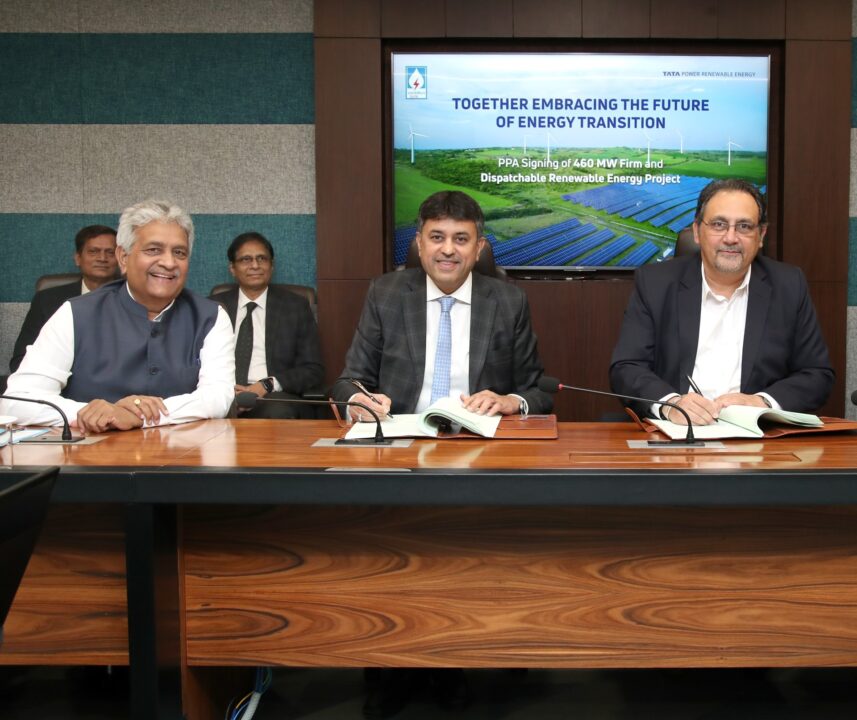Discover how Tata Power Renewable Energy’s partnership with SJVN is revolutionizing clean energy with a groundbreaking 460 MW project.

In a significant stride towards sustainable energy, Tata Power Renewable Energy Ltd (TPREL) has inked a transformative pact with state-owned SJVN Ltd, marking a pivotal moment in the renewable energy landscape. This groundbreaking collaboration aims to establish a robust 460 MW Firm and Dispatchable Renewable Energy (FDRE) project, poised to redefine the dynamics of power generation and distribution.
Powering the Future: Understanding the Scope
A Visionary Alliance for Clean Energy
The partnership between TPREL and SJVN heralds a new era of sustainable energy solutions, epitomizing their shared commitment to environmental stewardship and technological innovation. By leveraging synergies and expertise, both entities are poised to make substantial strides towards achieving green energy objectives, thereby fostering a more sustainable and eco-friendly future.
Unraveling the Potential: The FDRE Paradigm
At the heart of this transformative initiative lies the concept of Firm and Dispatchable Renewable Energy (FDRE), a pioneering approach that ensures round-the-clock power supply while facilitating the fulfillment of Renewable Purchase Obligations (RPOs) and Energy Storage Obligations (ESOs). The FDRE plant, a testament to ingenuity and sustainability, integrates solar, wind, and battery storage technologies to optimize energy dispatch during peak hours, thereby enhancing grid stability and reliability.
Environmental Impact and Sustainability Goals
The envisioned 460 MW FDRE project holds immense promise not only in terms of power generation but also in its profound environmental implications. With an estimated capacity to generate nearly 3,000 million units (MUs) of power annually and offset 2,200 million kilograms of CO2 emissions, the project stands as a beacon of sustainability, mitigating environmental degradation and fostering a cleaner, greener ecosystem.
A Closer Look: Key Insights and Milestones
Strategic Implications and Operational Milestones
With the signing of this landmark agreement, TPREL consolidates its position as a leading player in the renewable energy sector, further augmenting its total renewables capacity to an impressive 9,421 MW. This includes 4,906 MW projects currently in various stages of implementation, underscoring the company’s unwavering commitment to driving sustainable energy transformation on a global scale.
Hybrid Renewable Energy Plant: A Technological Marvel
To meet the rigorous demands of the 460 MW FDRE requirement, TPREL is set to embark on the development of a cutting-edge hybrid renewable energy plant. By harnessing the complementary strengths of solar, wind, and battery storage components, this innovative undertaking promises to deliver reliable and efficient power generation, thereby fortifying the grid and ensuring seamless energy distribution.
Conclusion: Pioneering the Path to Sustainable Energy
The partnership between Tata Power Renewable Energy Ltd and SJVN Ltd marks a seminal moment in the realm of clean energy, symbolizing a collaborative endeavor towards a more sustainable and eco-friendly future. Through innovative technologies, strategic partnerships, and unwavering commitment, both entities are poised to revolutionize the energy landscape, setting new benchmarks for environmental stewardship and sustainable development.
FAQs
What is the significance of the FDRE project in the context of renewable energy?
The FDRE project represents a paradigm shift in power generation, offering round-the-clock supply while meeting renewable energy obligations.
How will the hybrid renewable energy plant address peak-hour energy demands?
By integrating solar, wind, and battery storage technologies, the plant ensures efficient energy dispatch during peak hours, bolstering grid stability.
What environmental benefits are associated with the FDRE project?
The project is expected to generate nearly 3,000 million units (MUs) of power annually and offset 2,200 million kilograms of CO2 emissions, significantly mitigating environmental impact.
What are the strategic implications of the TPREL-SJVN partnership?
The partnership underscores a shared commitment to sustainable energy solutions, fostering technological innovation and environmental stewardship.
How does the FDRE project contribute to Tata Power Renewable Energy Ltd’s overall renewable energy capacity?
With the addition of the 460 MW FDRE project, TPREL’s total renewables capacity reaches an impressive 9,421 MW, reaffirming its position as a key player in the renewable energy sector.